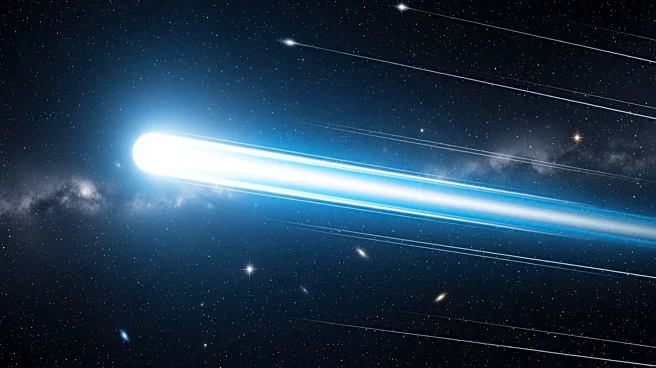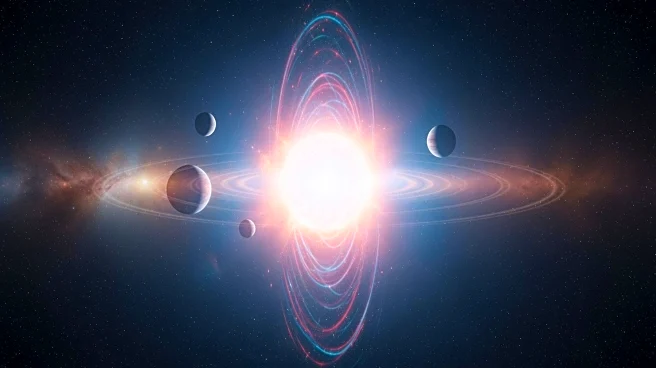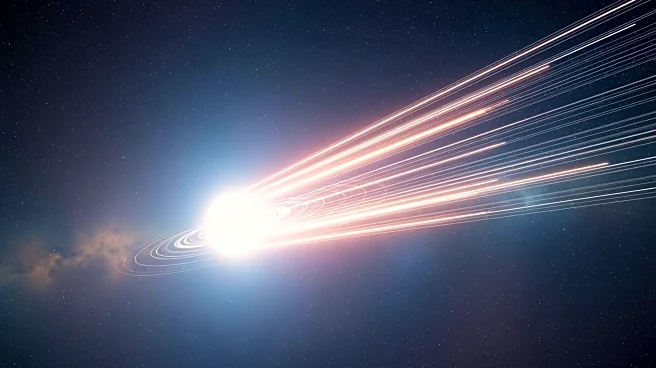What's Happening?
A team of astrophysicists led by Lukas Böhme at Bielefeld University has discovered that the Solar System is moving through space at a velocity far greater than previously predicted by standard cosmological
models. This finding was made through the analysis of radio galaxies using data from three radio telescope networks, including the LOFAR (Low Frequency Array) in Europe. The study revealed an anisotropy in the distribution of radio galaxies, indicating a lopsided pattern that exceeds five sigma statistical significance. This suggests that either the Solar System is moving faster than current models allow, or the distribution of radio galaxies is less uniform than assumed.
Why It's Important?
The discovery has significant implications for our understanding of the universe's structure and the Solar System's place within it. If the Solar System is indeed moving faster than expected, it challenges fundamental assumptions about the large-scale structure of the universe, potentially requiring revisions to existing cosmological models. This could impact various fields of astrophysics and cosmology, prompting further research and exploration to understand the underlying causes of this discrepancy. The findings also align with previous studies using different methods, reinforcing the notion that this is a genuine feature of the universe rather than a measurement error.
What's Next?
Further research is likely to be conducted to explore the implications of this discovery. Astrophysicists may develop new models or refine existing ones to account for the observed velocity of the Solar System. Additionally, the study may prompt more detailed observations using advanced telescopes and techniques to verify the findings and explore their causes. The scientific community will likely engage in discussions and debates to understand the broader impact of this discovery on cosmological theories.
Beyond the Headlines
This discovery could lead to a deeper understanding of the universe's evolution since the Big Bang and the distribution of matter across space. It may also inspire new technological advancements in observational techniques, enhancing our ability to study distant galaxies and cosmic phenomena. The findings highlight the importance of continuous exploration and the potential for groundbreaking discoveries that challenge established scientific paradigms.











